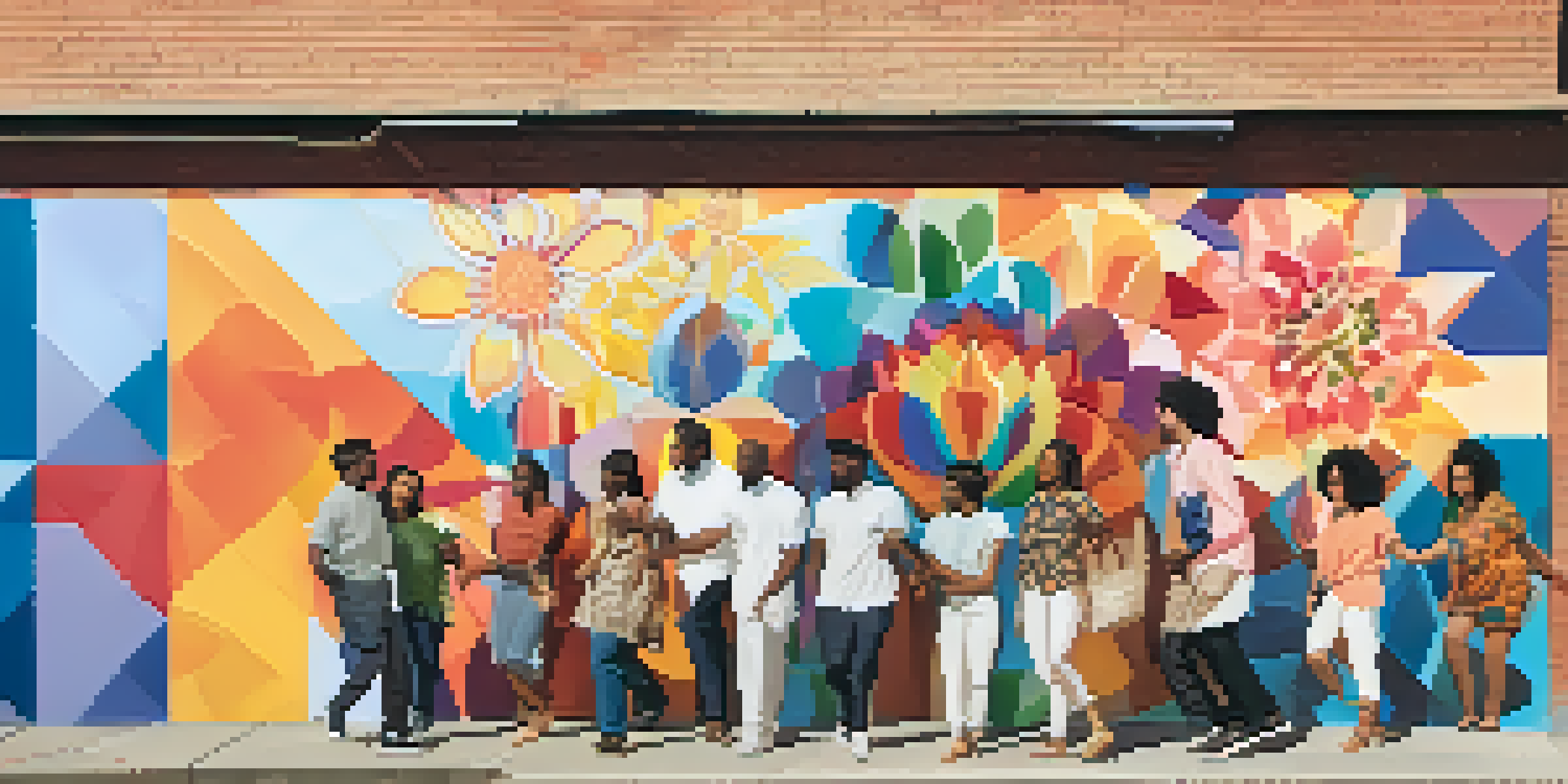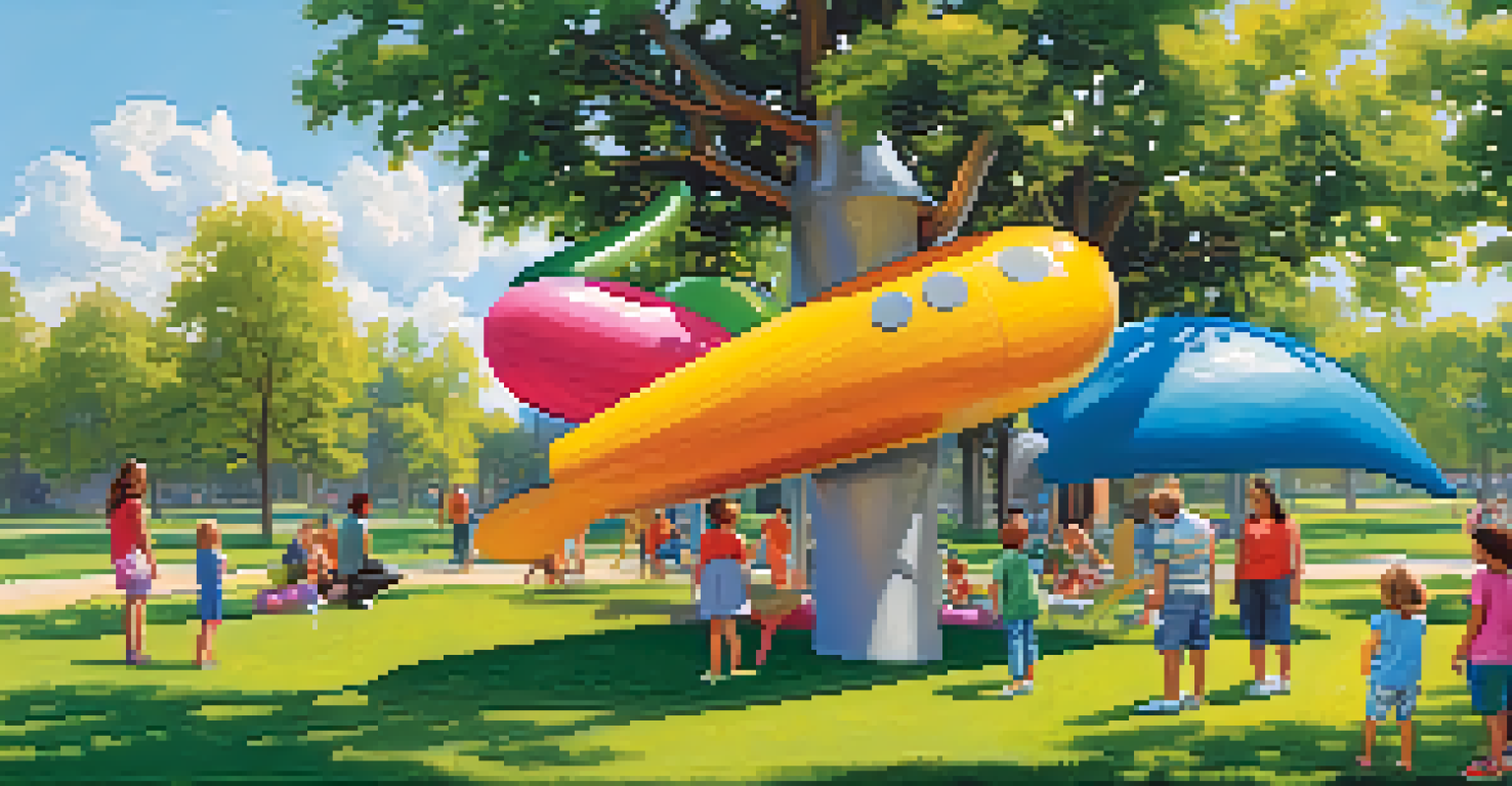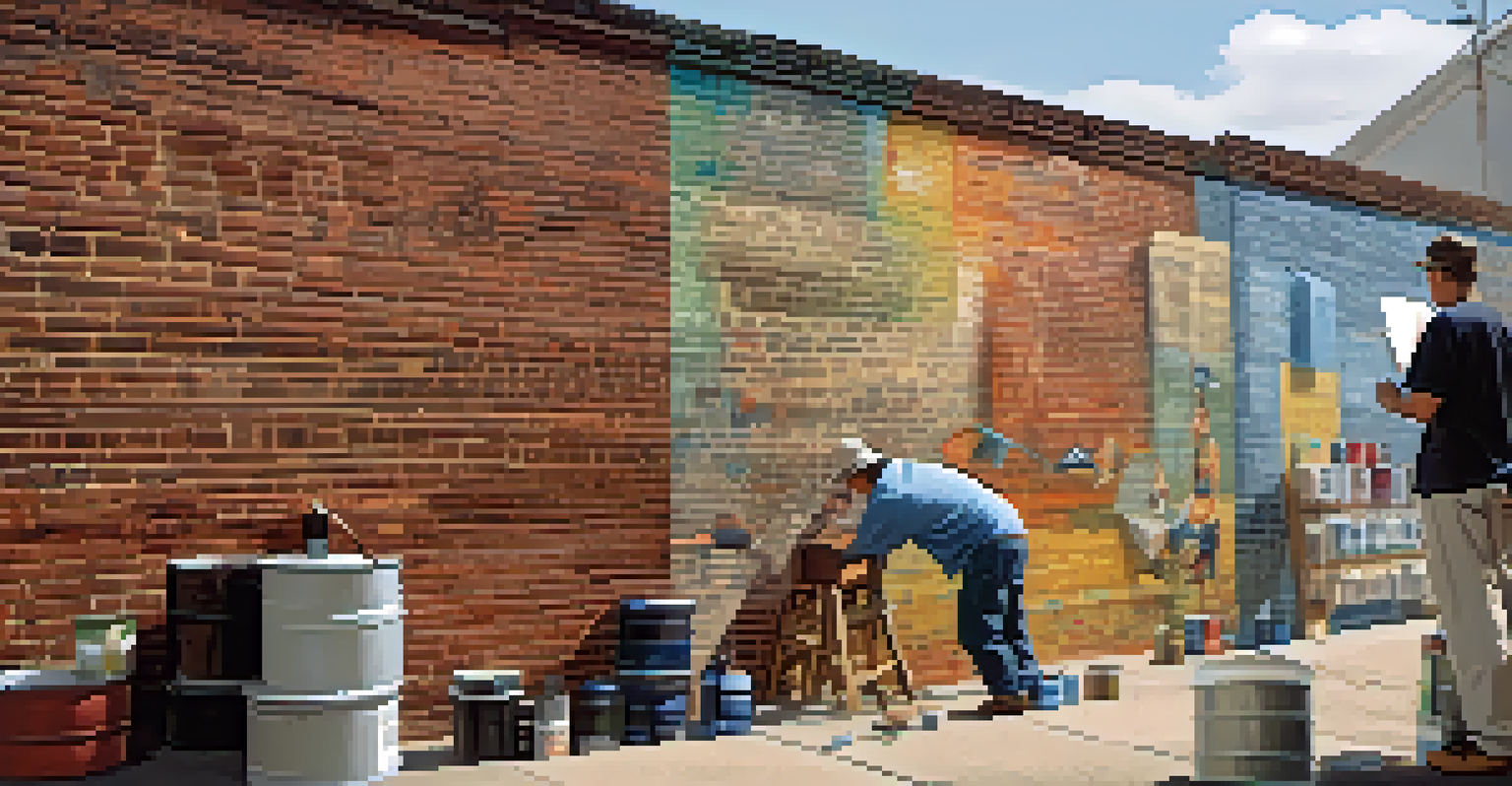Public Art and Community Engagement in Sacramento's Neighborhoods

The Role of Public Art in Community Identity
Public art plays a pivotal role in shaping a community's identity. In Sacramento, murals and sculptures reflect the rich cultural diversity found in various neighborhoods. These artworks not only beautify the spaces but also tell stories that resonate with local residents.
Public art is a way of thinking about community that goes beyond the walls of a gallery.
When people see familiar themes and symbols in public art, it fosters a sense of belonging. For example, the vibrant murals in Midtown often depict historical events or local heroes, sparking conversations among residents. This shared connection helps to strengthen community ties.
Moreover, public art can serve as a platform for underrepresented voices. By showcasing the talents of local artists, Sacramento's neighborhoods can celebrate their unique narratives, creating a more inclusive environment for everyone.
How Public Art Projects Are Initiated
Initiating public art projects often involves collaboration between artists, local government, and community members. Sacramento's Public Art Program actively seeks input from residents to ensure that the artwork reflects their values and aspirations. This participatory approach is crucial for fostering community engagement.

For instance, the Sacramento Metropolitan Arts Commission holds workshops where community members can share their ideas and preferences for upcoming art installations. This not only empowers residents but also ensures that the art resonates with the community's identity.
Public Art Shapes Community Identity
Public art reflects and enhances the cultural diversity of a community, fostering a sense of belonging among residents.
Additionally, partnerships with local schools and organizations can help generate interest and involvement in public art projects. Engaging students in the creative process not only nurtures their artistic talents but also instills a sense of pride in their neighborhoods.
Public Art as a Catalyst for Community Conversations
Public art often serves as a catalyst for important community conversations. In Sacramento, installations like the 'Sacramento's Black Lives Matter' mural have sparked dialogue about social justice and equity. These artworks encourage residents to reflect on their values and engage in meaningful discussions.
Art is not a thing; it is a way.
When community members gather around public art, they share experiences and perspectives that can lead to greater understanding. For example, the interactive art projects in the River District invite people to contribute their thoughts and feelings, creating a collective narrative.
Moreover, public art can challenge perceptions and provoke thought. By addressing social issues through artistic expression, Sacramento's neighborhoods can foster a culture of openness and dialogue, paving the way for positive change.
Engaging Youth Through Public Art Programs
Youth engagement is a significant aspect of public art initiatives in Sacramento. Programs that involve young people in the creation of murals or installations can have a lasting impact on their sense of community. By actively participating, youths develop skills and confidence while expressing their creativity.
For example, the 'Youth Art Program' collaborates with local schools to provide students with opportunities to work alongside professional artists. These experiences not only enhance their artistic abilities but also instill a sense of ownership over their community's visual landscape.
Engagement Fuels Public Art Projects
Community involvement is essential in initiating public art projects, ensuring that the artwork resonates with local values and aspirations.
Furthermore, engaging youth in public art can cultivate a passion for civic involvement. As they contribute to beautifying their neighborhoods, they are more likely to take pride in their surroundings and advocate for positive changes in their community.
The Economic Impact of Public Art on Neighborhoods
Public art can also have a positive economic impact on Sacramento's neighborhoods. Vibrant murals and sculptures attract visitors, boosting local businesses and tourism. When people visit an area for its art, they often explore shops and restaurants, stimulating the local economy.
Additionally, public art can enhance property values. Neighborhoods with engaging art installations often become more desirable places to live, leading to increased investment. This can create a positive feedback loop where art fosters economic growth, which in turn funds more public art projects.
Moreover, local artists benefit from increased visibility and opportunities. As neighborhoods invest in public art, artists can find more platforms to showcase their work, contributing to the cultural vibrancy of Sacramento.
Celebrating Diversity Through Public Art
Public art in Sacramento serves as a celebration of the city's diversity. From murals that reflect the Latino heritage to installations that honor the Asian American community, these artworks highlight the rich tapestry of cultures present in the area. This representation fosters pride among residents and promotes inclusivity.
Moreover, public art can facilitate cross-cultural understanding. By showcasing different traditions and perspectives, artworks encourage dialogue and appreciation among diverse community members. For example, festivals that incorporate public art often bring together various cultural groups to share their stories and experiences.
Public Art Sparks Vital Conversations
Art installations serve as catalysts for discussions on social issues, promoting understanding and dialogue within the community.
This celebration of diversity not only enriches the community but also attracts visitors. People are drawn to vibrant neighborhoods that showcase a range of artistic expressions, contributing to Sacramento's reputation as a culturally rich city.
The Future of Public Art and Community Engagement
Looking ahead, the future of public art in Sacramento is bright, with endless possibilities for community engagement. As technology evolves, artists are exploring innovative ways to incorporate digital elements into their work. This evolution can further enhance interactivity and engagement with the public.
Additionally, community-driven initiatives continue to gain momentum. Residents are increasingly advocating for more public art projects, ensuring that their voices are heard in the decision-making process. This grassroots approach can lead to more meaningful and relevant art installations.

As Sacramento embraces its artistic potential, the commitment to fostering community engagement through public art will only strengthen. In doing so, the city will continue to weave a vibrant narrative that reflects the unique stories and identities of its neighborhoods.